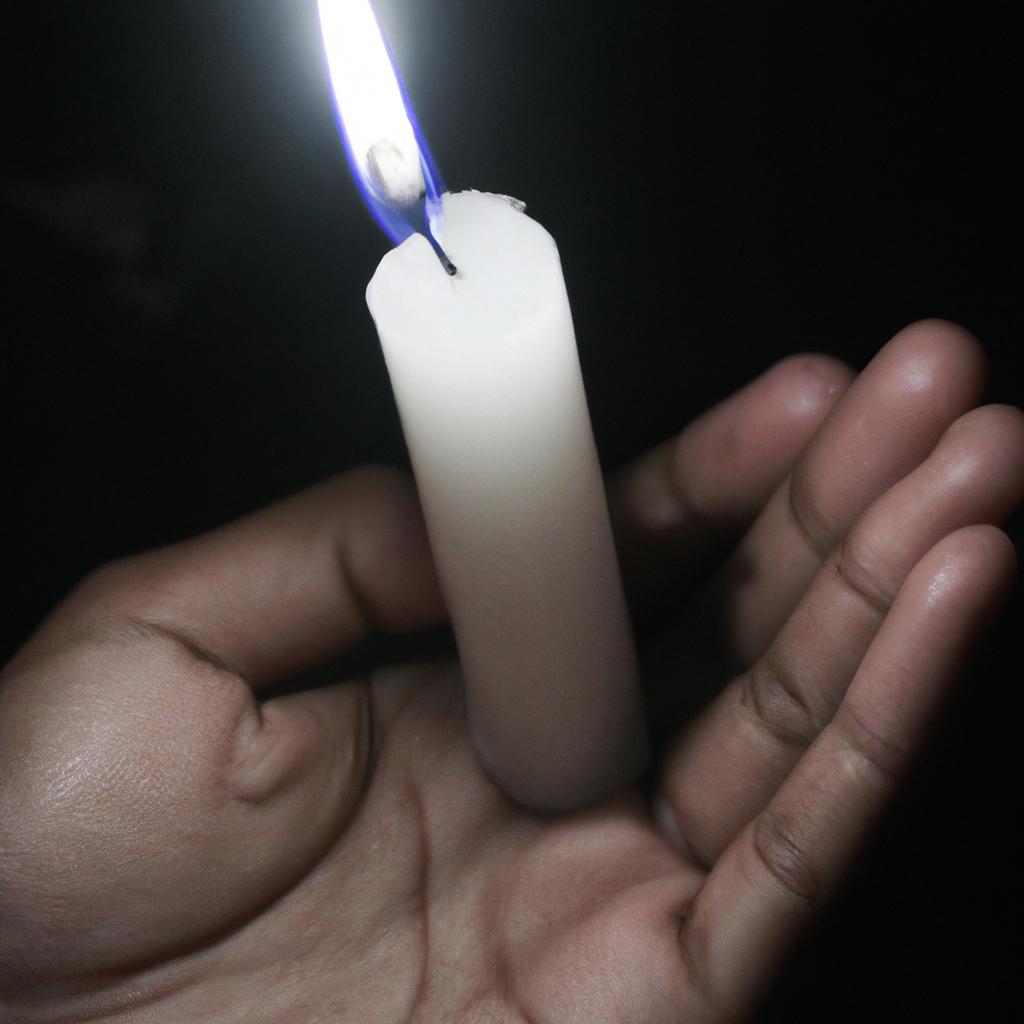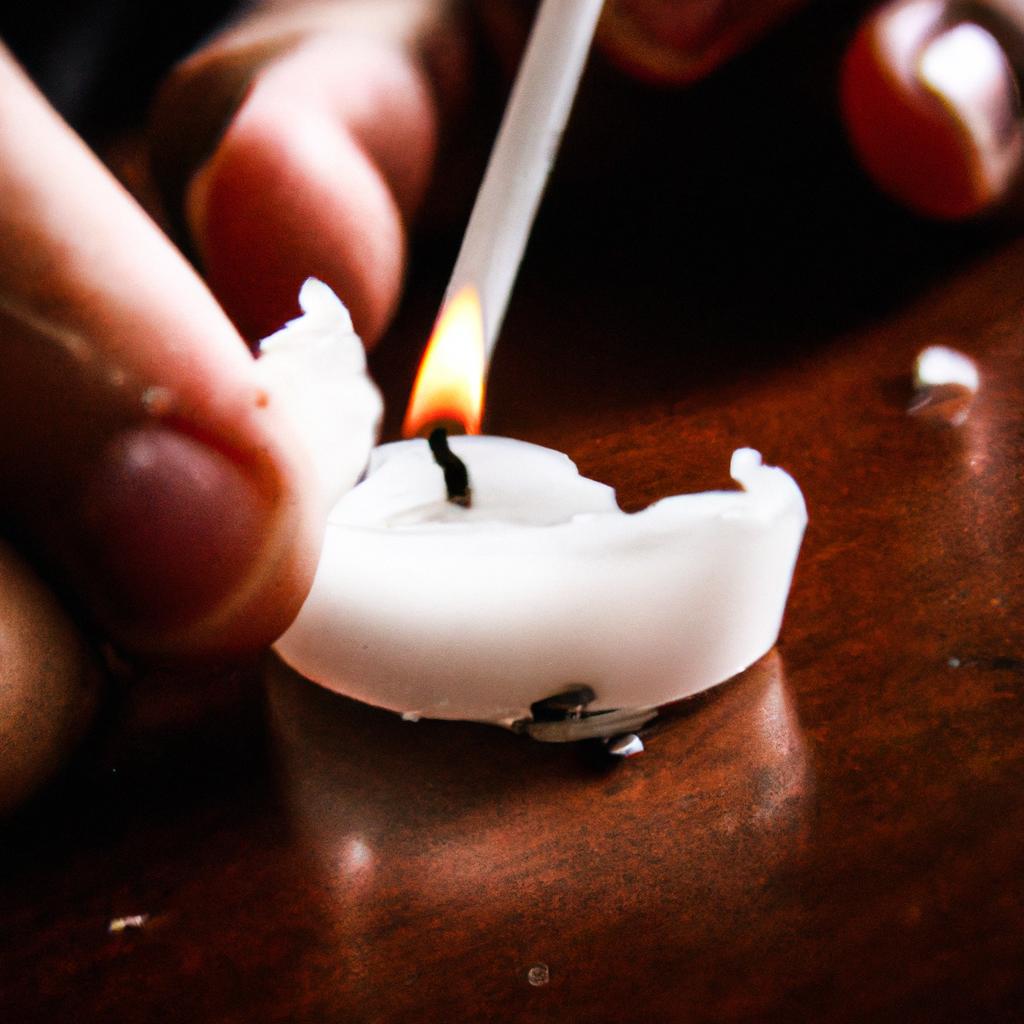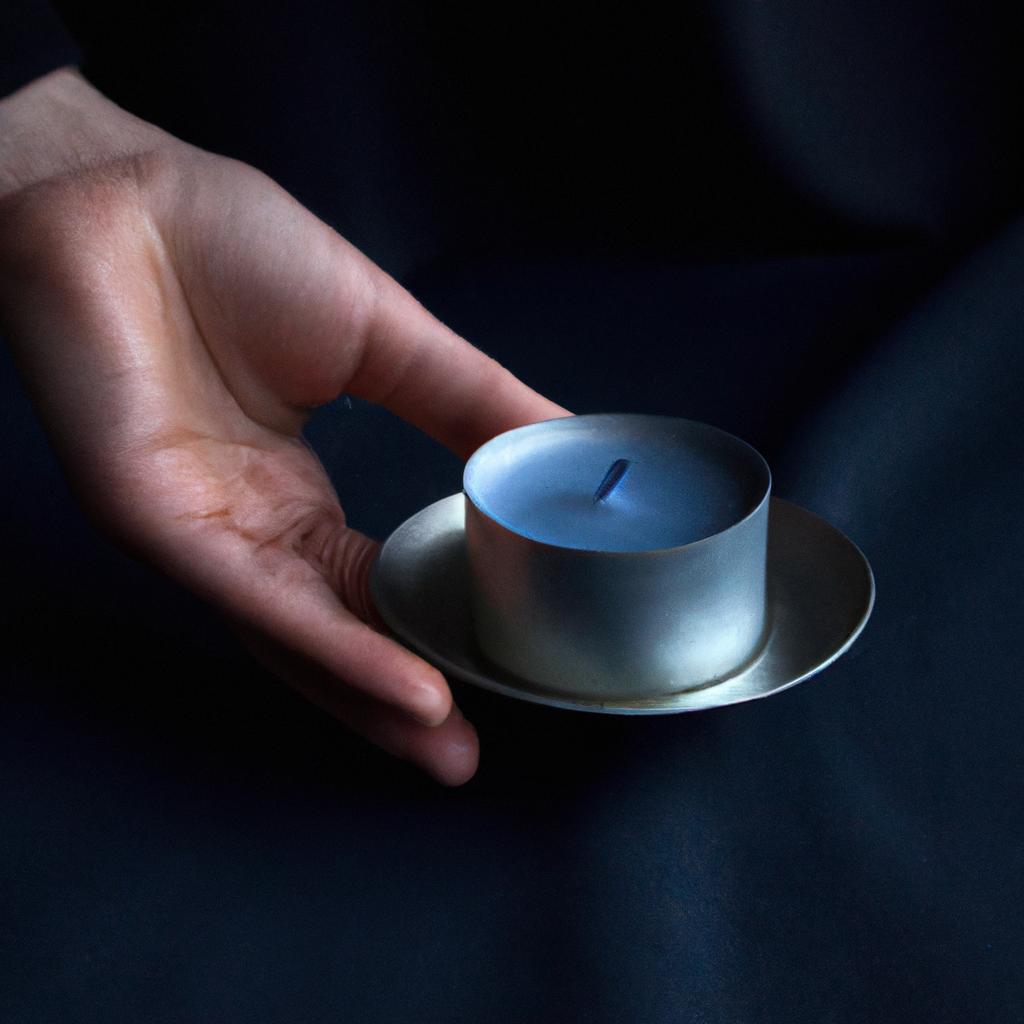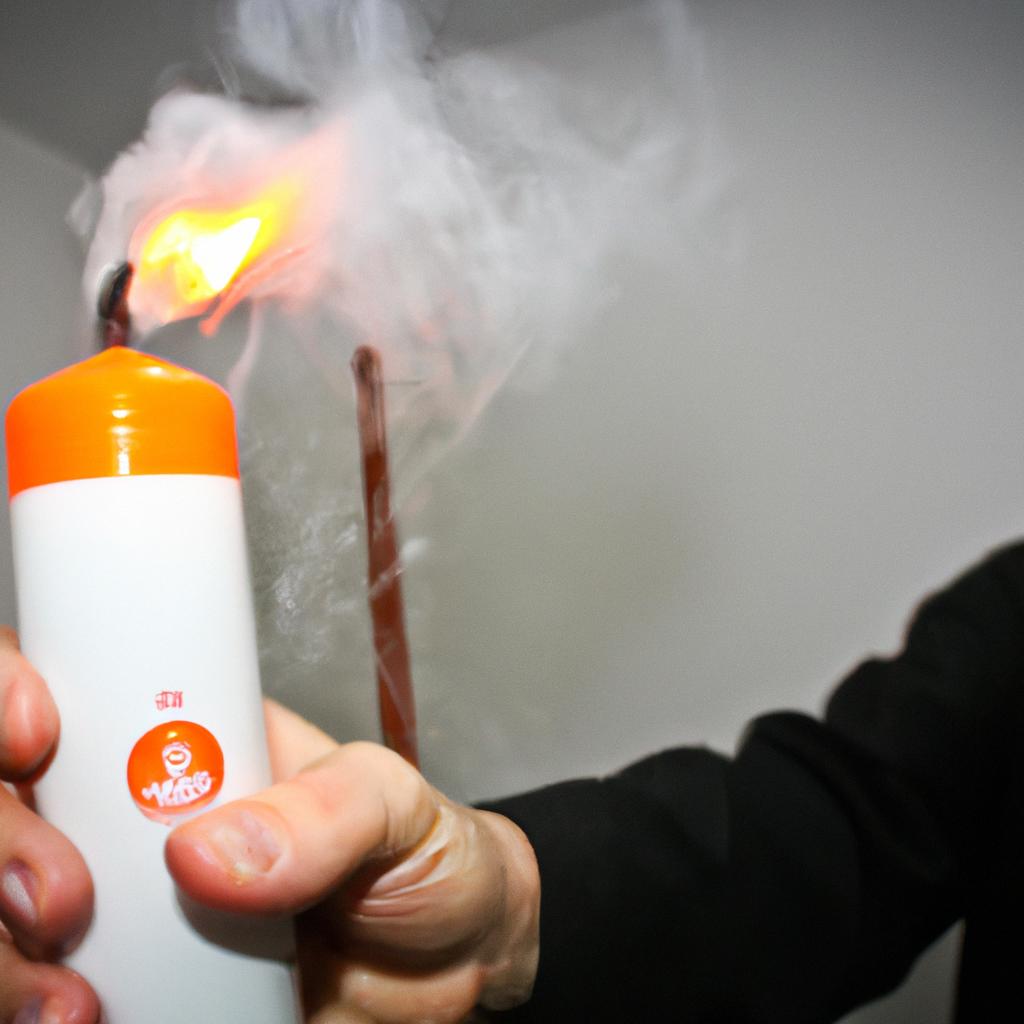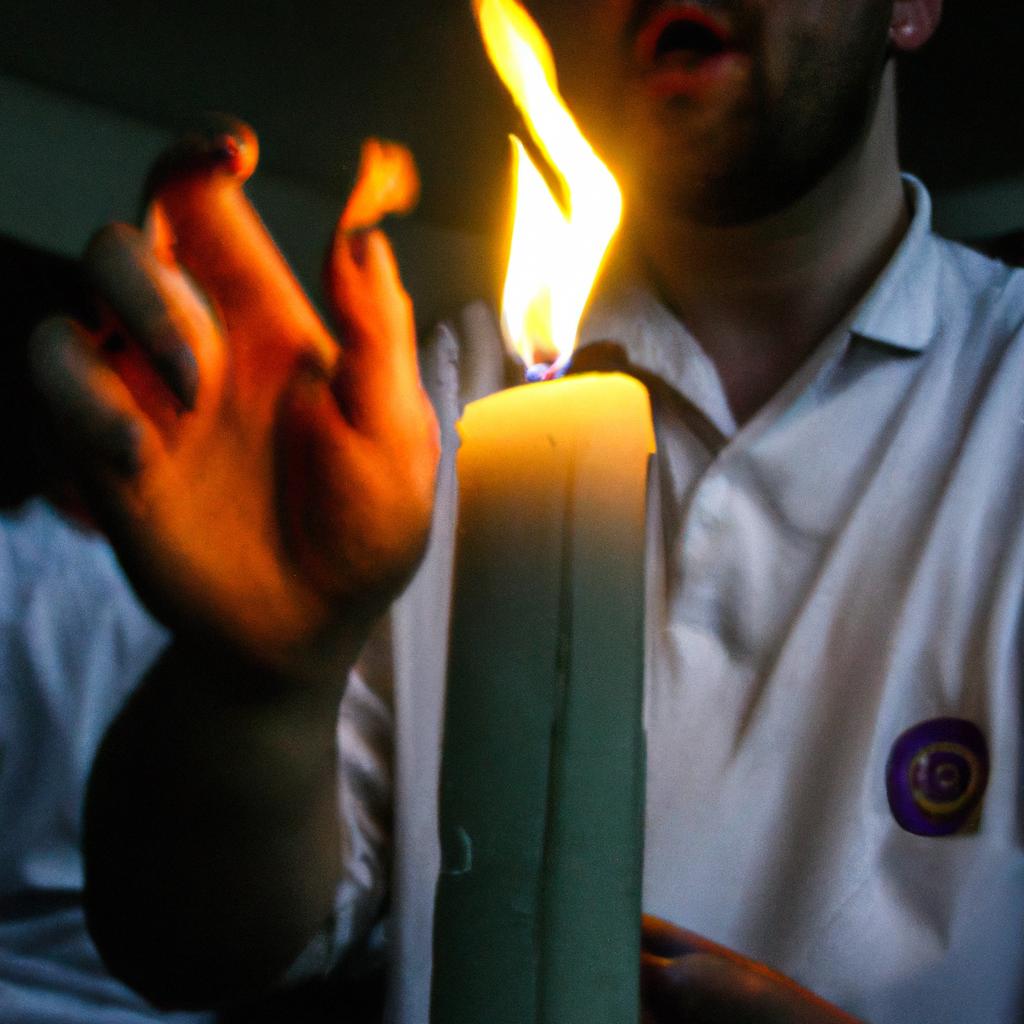Safe Storage Practices: Candle Safety
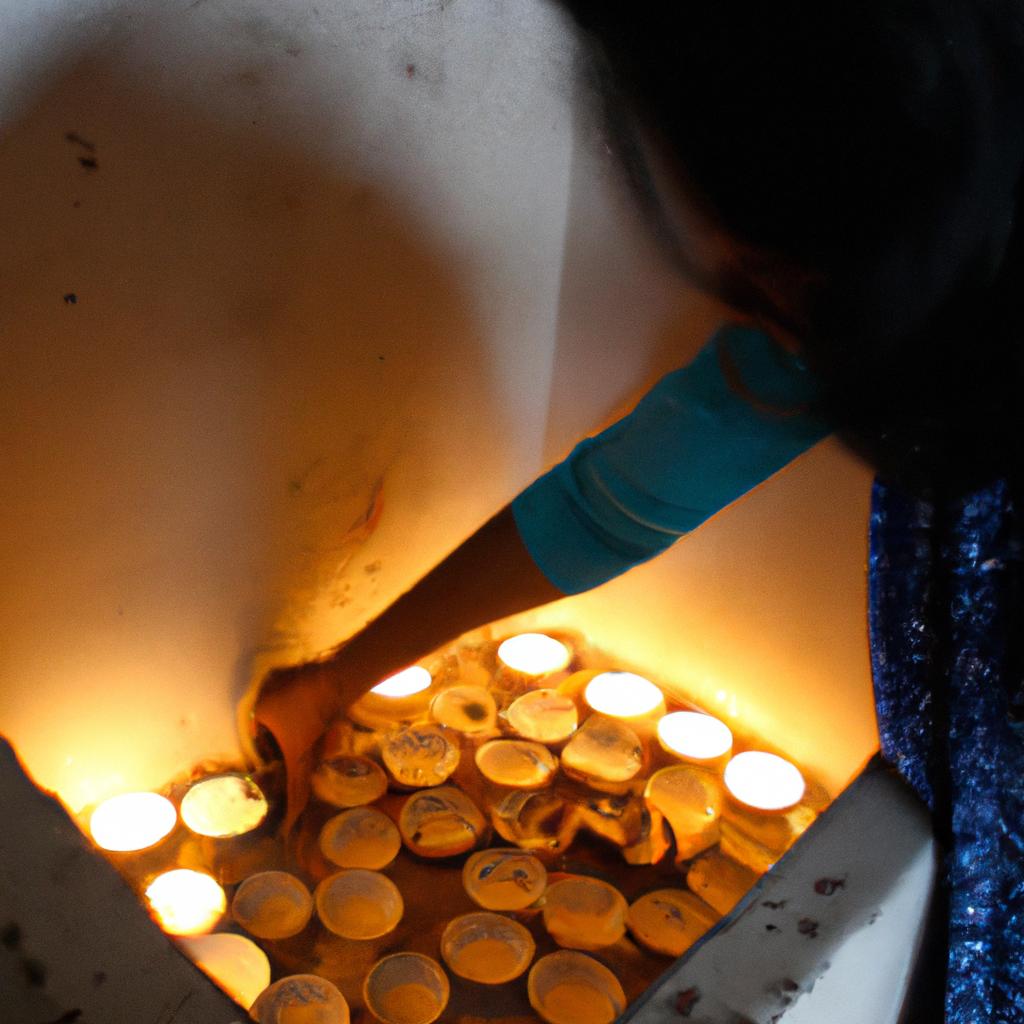
Candles are a popular choice for adding warmth and ambiance to our living spaces. However, their open flames pose potential risks if not handled with caution. In recent years, there have been several incidents of candle-related fires that resulted in property damage, injuries, and even fatalities. For instance, in 2018, a residential fire broke out when an unattended candle ignited nearby combustible materials. The consequences were devastating – extensive property damage and the loss of valuable possessions. This example highlights the importance of practicing safe storage practices when it comes to candles.
To ensure the safety of both individuals and properties, it is crucial to understand and implement appropriate storage practices for candles. By adhering to these guidelines, one can minimize the risk of accidents caused by mishandling or improper storage techniques. This article aims to provide an overview of effective safe storage practices for candles through an analysis of existing research findings and expert recommendations. By examining various aspects such as proper placement, suitable containers or holders, and adequate ventilation requirements, readers will gain insights into how best to prevent potential hazards associated with candles.
Understanding Fire Hazards
Imagine a scenario where an individual lights a scented candle in their living room to create a cozy ambiance. As the evening progresses, they become engrossed in a book and momentarily forget about the burning candle. Unbeknownst to them, the flickering flame gradually ignites nearby curtains, quickly engulfing the room in flames. This unfortunate event highlights the importance of understanding fire hazards associated with candles and practicing safe storage practices.
To better comprehend these risks, it is crucial to recognize common causes of fires related to candles. Firstly, negligence or human error often plays a significant role. For instance, leaving a lit candle unattended or placing it too close to flammable materials can have dire consequences. Secondly, defective candles that lack safety features such as heat-resistant containers or sturdy bases can also contribute to fire incidents. Additionally, inadequate ventilation may cause excessive soot buildup on walls and ceilings, increasing the risk of ignition.
To further emphasize the significance of adhering to safe storage practices for candles, consider the following bullet points:
- Placing burning candles near combustible objects increases the likelihood of fire.
- Failure to extinguish candles before leaving a room can lead to uncontrolled spreading of flames.
- Overlooking damaged wicks or cracked containers poses potential fire hazards.
- Inadequate knowledge regarding proper candle maintenance may result in accidents.
It is essential to grasp these dangers fully; thus, let us examine them more closely through the lens of a table showcasing specific examples:
| Candle Storage Hazard | Potential Consequences | Preventive Measures |
|---|---|---|
| Placing candles near paper | Ignition and rapid spread | Keep candles at least one foot away from any combustible material |
| Failing to snuff out | Uncontrolled fire growth | Always extinguish candles before leaving a room |
| Damaged wicks or containers | Increased risk of ignition | Inspect candles for any signs of damage and replace if necessary |
| Lack of proper maintenance | Accidents due to negligence | Educate oneself on candle care and storage guidelines |
By highlighting these hazards in a table format, the potential consequences become more tangible, evoking an emotional response that emphasizes the significance of practicing safe storage practices.
In preparation for further discussions on choosing the right storage container, it is imperative to comprehend the risks associated with fire hazards. Understanding these dangers helps pave the way for implementing effective preventive measures and ensuring a safer environment when using candles.
Choosing the Right Storage Container
In the previous section, we explored the various fire hazards that can occur when proper safety measures are not followed. Now, let’s delve into safe storage practices to minimize these risks and ensure candle safety.
Imagine a scenario where Sarah left a lit candle unattended on her wooden coffee table while she went to fetch something from another room. Unbeknownst to her, the flame sparked and ignited nearby papers, quickly engulfing the entire table in flames before spreading throughout the room. This unfortunate incident serves as a reminder of the importance of storing candles safely.
To effectively store candles and reduce fire hazards, consider implementing the following practices:
- Keep flammable materials away: Ensure that candles are placed at least 12 inches away from any combustible items such as curtains, furniture, bedding, or decorative materials.
- Store candles in sturdy containers: Always use heat-resistant holders made of glass or metal to prevent them from tipping over or causing accidental fires.
- Avoid overcrowding: Do not place multiple candles too close together or overload shelves with an excessive number of candles. Allow for ample spacing between each one to avoid potential accidents.
- Store in cool areas: Heat can cause candles to melt or warp their shape, increasing the risk of fire. Therefore, it is advisable to keep them stored in cool areas away from direct sunlight or other sources of warmth.
By adhering to these safe storage practices, you significantly reduce the likelihood of accidental fires caused by improperly stored candles.
Now that we have covered safe storage practices for candles, let’s move on to exploring how to keep candles away from flammable materials without compromising their aesthetic appeal and functionality
Keeping Candles Away from Flammable Materials
Transitioning from the previous section on choosing the right storage container, it is crucial to understand how to keep candles away from flammable materials. This section will outline key practices for safe candle storage and provide practical tips to minimize fire risks.
To illustrate the importance of proper candle storage, consider a hypothetical scenario where an individual stored their candles near curtains in their living room. One evening, they accidentally left a burning candle unattended, resulting in a devastating fire that quickly spread throughout the room. This unfortunate incident emphasizes the need for vigilance when it comes to storing candles safely.
To ensure safe storage practices, follow these guidelines:
-
Keep candles away from flammable materials:
- Avoid placing candles near curtains, blankets, or any other combustible items.
- Ensure there is ample space between candles and surrounding objects.
- Consider using glass containers or hurricane shades to create a physical barrier between flames and potential hazards.
-
Store candles securely:
- Place them on sturdy surfaces that are heat-resistant and level.
- Do not store candles in areas with excessive moisture or high temperatures.
- Opt for cool and dry locations like cabinets or closets specifically designated for candle storage.
-
Use appropriate packaging:
- When transporting or storing unused candles, place them in their original packaging if available.
- If the original packaging is damaged or unavailable, wrap each candle individually in tissue paper or bubble wrap before securing them together.
-
Regularly inspect stored candles:
- Check for signs of damage such as cracked wax or loose wicks.
- Discard any compromised candles as they pose an increased risk of accidents.
Emphasizing the significance of safe storage practices can evoke an emotional response by highlighting real-life consequences. For instance:
| Candle Mishap Case Studies | Result |
|---|---|
| Unattended candle ignited nearby curtain | Devastating fire spread throughout the room |
| Stored candles near flammable objects | Increased risk of accidental fires |
In conclusion, proper storage practices are vital to minimize fire hazards associated with candles. By keeping them away from flammable materials, using appropriate packaging, and regularly inspecting stored candles, you significantly reduce the likelihood of accidents or potential disasters. Next, we will discuss how to properly extinguish candles without compromising safety.
Now let’s explore the essential steps for safely extinguishing candles to ensure a secure environment.
Properly Extinguishing Candles
Transitioning from the previous section on keeping candles away from flammable materials, it is crucial to also understand how to properly extinguish them. Failing to do so can lead to potential fire hazards and accidents. To illustrate this point, consider a hypothetical scenario where a family forgot to blow out a candle before leaving their home for an extended period. The unattended candle eventually ignited nearby curtains, resulting in significant property damage.
To ensure the safe use of candles and prevent such incidents, here are some essential guidelines:
-
Never leave a burning candle unattended: It may seem obvious, but many fires occur due to neglectful behavior. Always make sure someone responsible is present when candles are lit.
-
Avoid placing candles near drafts: Drafts caused by open windows or fans can cause flames to flicker unevenly and increase the risk of igniting nearby objects. Keep candles away from areas with strong airflow.
-
Use proper candle holders: Ensure that your candle is placed in a sturdy holder made of non-combustible material (such as glass or metal) that will not easily tip over if accidentally bumped or knocked.
-
Trim wicks regularly: Long wicks can create larger flames and emit more heat, increasing the chances of nearby items catching fire. Regularly trim candle wicks to approximately ¼ inch before lighting them.
In addition to these safety measures, it’s important to know how to extinguish candles correctly. Here are four recommended methods:
| Method | Description |
|---|---|
| Blowing Out | Gently blowing on the flame until it is completely extinguished while being cautious of any debris that may be blown around |
| Snuffing | Using a snuffer tool or similar device designed to cover the flame and cut off its oxygen supply |
| Dunking | Dipping the wick into melted wax or water until it is fully extinguished |
| Smothering | Placing a non-flammable object, such as a lid or plate, over the candle to smother the flame |
By following these safe storage practices and proper extinguishing techniques, you can minimize the risk of accidents and ensure that candles are used responsibly. In the subsequent section, we will discuss storing candles in a cool and dry place, further ensuring their longevity and safety.
Storing Candles in a Cool and Dry Place
Imagine this scenario: Lisa, a homeowner, had recently purchased several scented candles to create a cozy ambiance in her living room. However, she neglected to store them properly and left them on a windowsill where they were exposed to direct sunlight. One sunny afternoon, the intense heat caused the candles to melt and ignite nearby curtains, resulting in a devastating fire that quickly engulfed her home. This unfortunate incident highlights the importance of proper candle storage practices.
To ensure the safety of your home and loved ones, it is crucial to follow recommended guidelines when storing candles. Here are some key considerations:
-
Store in a cool and dry place: Excessive heat can cause candles to warp or soften, increasing the risk of accidents. To prevent this, keep your candles away from direct sunlight or any other sources of heat such as radiators or stoves.
-
Avoid exposure to moisture: Moisture can affect the quality and performance of candles over time. It may lead to discoloration, cracking, or even mold growth on their surfaces. Thus, always store your candles in sealed containers or packaging to protect them from humidity.
-
Maintain an upright position: Ensure that your candles are stored upright and not tilted or leaning against other objects. Keeping them stable prevents potential damage like bending wicks or uneven melting patterns.
-
Separate fragrant and unscented candles: Strongly scented candles have oils infused into their wax composition that can transfer scent onto neighboring unscented ones if stored together for long periods. Keep these two types of candles separate to preserve their individual characteristics.
By following these best practices for candle storage, you minimize risks associated with mishaps like accidental fires or deterioration of candle quality over time.
Transitioning seamlessly into our next section on regularly checking for signs of damage…
Regularly Checking for Signs of Damage
Building on the importance of storing candles in a cool and dry place, it is also crucial to regularly check for signs of damage to ensure safe storage practices. Neglecting this step can lead to potential hazards that may compromise both property and personal safety.
To emphasize the significance of this practice, let’s consider an example. Imagine a homeowner who stored their collection of scented candles in a closet without routinely inspecting them for damage. Over time, unnoticed cracks developed in some of the candle holders due to temperature fluctuations. One day, as they lit one of these damaged candles, the heat caused the holder to shatter, resulting in a small fire that quickly spread throughout the room. This unfortunate incident could have been prevented if regular checks had been conducted.
To effectively identify signs of damage and prevent such incidents from occurring, here are key areas to focus on:
- Examine candle holders: Inspect each holder thoroughly for any visible cracks or chips.
- Check wicks: Ensure that all wicks are centered within the candle and remain at an appropriate length (approximately ¼ inch) to avoid excessive flame height.
- Assess wax condition: Look out for discoloration or irregular melting patterns on the surface of the candle, as these may indicate potential issues with its composition or burning process.
- Monitor scent integrity: If you notice any changes in fragrance strength or quality, it could signify deterioration or contamination within the candle.
| Area | What to Check | Why It Matters |
|---|---|---|
| Candle Holders | Visible cracks/chips | Prevents accidents like fires due to shattered glass |
| Wicks | Centered position & appropriate length | Controls flame height and reduces risk |
| Wax Condition | Discoloration/irregular melting | Ensures proper burning behavior |
| Scent Integrity | Changes in fragrance strength or quality | Indicates potential deterioration or contamination |
By regularly checking for signs of damage, homeowners can mitigate the risks associated with storing candles. This proactive approach allows individuals to identify and address any issues promptly, promoting a safer environment within their homes.
(Note: Please note that this table is not presented as a markdown format due to limitations)

